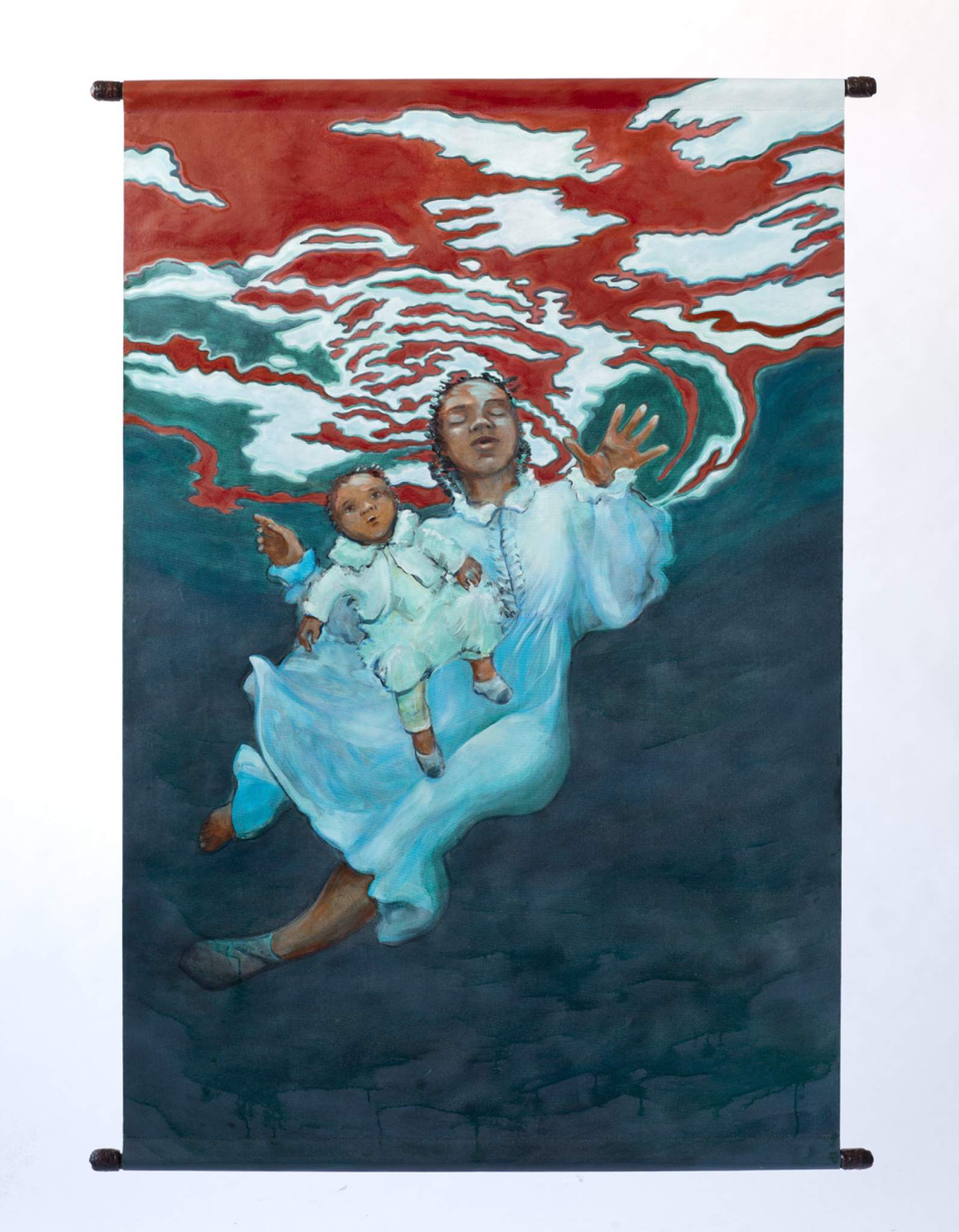CELEBRATING THE 200TH ANNIVERSARY OF THE ERIE CANAL
Posted on June 5, 2017
One of the events in celebration of this milestone is a special art exhibit – LIFE ON THE CANAL THEN BY ARTISTS NOW, opening at the Erie Canal Museum. Curator Virginia Creighton has organized artwork by 17 contemporary artists and I am honored to be included. The opening will be on Wednesday, June 7 from 5pm to 7pm. The Erie Canal Museum is located at 318 Erie Boulevard East in Syracuse and is open Monday through Saturday from 10am to 5pm and 10am to 3pm on Sundays. The show will run through July 31 and then moves to the Schenectady Historical Society from Fall 2017 through Spring 2018.
My piece, Madonna of the Canal, is an oil painting on canvas, 60” x 40”. I based it on the tragic true story of the Harris Family. The cruel tale was first reported in the New York Tribune of 1850.
In October 1850, William, Caroline, and their toddler daughter struggled to escape from slavery by traveling on the Erie Canal. Born in slavery in South Carolina, William Harris moved to Philadelphia and married Caroline about 1843. The Fugitive Slave Act threatened their lives as free people, so they left Philadelphia for New York City. There they purchased tickets for Rochester, where they intended to take a lake ship to Canada. In Albany, their tickets were stolen and destroyed by people who forced them to purchase tickets again. Once they were on the canal boat, the crew (including Captain Harwell Webster and crew members Silas H. Cowell and Jeremiah Cluney) cruelly tormented the Harris family. They awakened William that night and told him that his master was aboard and that he would be returned to slavery. After three days of “threats and brutal conduct,” Caroline jumped overboard, taking their daughter with her. Passengers rescued Caroline, but their daughter drowned, and the boat did not stop to save her. Threatened with death, William cut his own throat and lay for hours while the crew played cards nearby. Finally allowed to leave the boat, William Harris walked along the canal, following his wife who was still on board, for twenty miles until he fainted. Rescued by Captain Ogden, another canal boat captain, William was taken to abolitionist Dr. Hiram Hoyt in Syracuse, who treated his wounds. Rev. Lisle, African American minister from Syracuse, found Caroline Harris west of Syracuse, still on board the canal boat. The crew were arrested in Rochester and returned to Syracuse, where they were jailed and then fined. William and Caroline Harris eventually found their way to Canada.
The Harris family received national attention. On October 26, 1850, the New York Tribune called this “one of the grossest and most inhuman outrages that has ever come to our notice.” The crew was “human fiends,” and this “outrageous affair” illustrated the worst effects of the “bill of abominations.”
